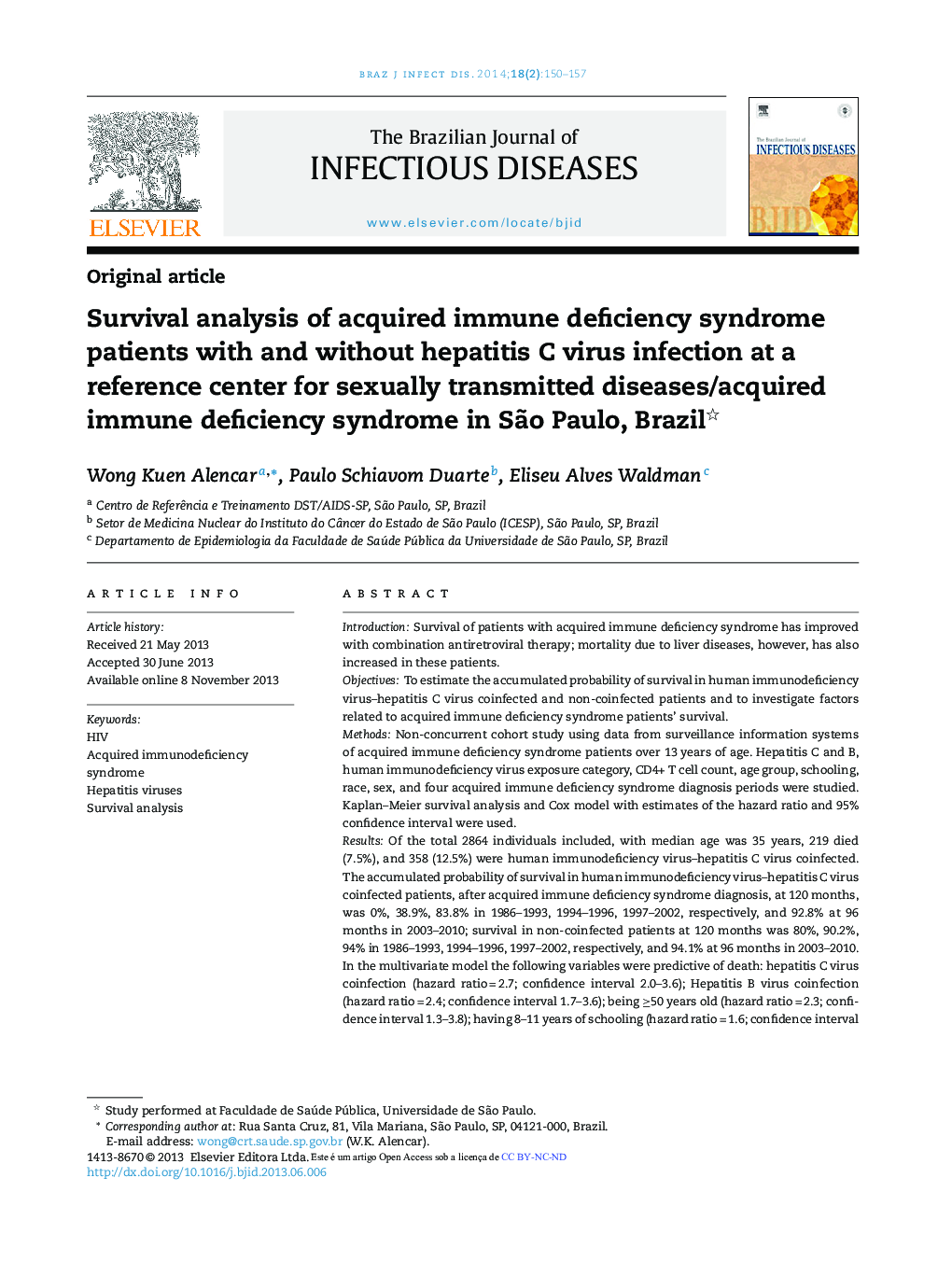| Article ID | Journal | Published Year | Pages | File Type |
|---|---|---|---|---|
| 3344250 | The Brazilian Journal of Infectious Diseases | 2014 | 8 Pages |
IntroductionSurvival of patients with acquired immune deficiency syndrome has improved with combination antiretroviral therapy; mortality due to liver diseases, however, has also increased in these patients.ObjectivesTo estimate the accumulated probability of survival in human immunodeficiency virus–hepatitis C virus coinfected and non-coinfected patients and to investigate factors related to acquired immune deficiency syndrome patients’ survival.MethodsNon-concurrent cohort study using data from surveillance information systems of acquired immune deficiency syndrome patients over 13 years of age. Hepatitis C and B, human immunodeficiency virus exposure category, CD4+ T cell count, age group, schooling, race, sex, and four acquired immune deficiency syndrome diagnosis periods were studied. Kaplan–Meier survival analysis and Cox model with estimates of the hazard ratio and 95% confidence interval were used.ResultsOf the total 2864 individuals included, with median age was 35 years, 219 died (7.5%), and 358 (12.5%) were human immunodeficiency virus–hepatitis C virus coinfected. The accumulated probability of survival in human immunodeficiency virus–hepatitis C virus coinfected patients, after acquired immune deficiency syndrome diagnosis, at 120 months, was 0%, 38.9%, 83.8% in 1986–1993, 1994–1996, 1997–2002, respectively, and 92.8% at 96 months in 2003–2010; survival in non-coinfected patients at 120 months was 80%, 90.2%, 94% in 1986–1993, 1994–1996, 1997–2002, respectively, and 94.1% at 96 months in 2003–2010. In the multivariate model the following variables were predictive of death: hepatitis C virus coinfection (hazard ratio = 2.7; confidence interval 2.0–3.6); Hepatitis B virus coinfection (hazard ratio = 2.4; confidence interval 1.7–3.6); being ≥50 years old (hazard ratio = 2.3; confidence interval 1.3–3.8); having 8–11 years of schooling (hazard ratio = 1.6; confidence interval 1.1–2.3), having 4–7 years of schooling (hazard ratio = 1.9; confidence interval 1.3–2.8) and having up to 3 years of schooling (hazard ratio = 3.3; confidence interval 2.0–5.5).ConclusionsAmong patients diagnosed after 1996, there was a significant increase in the cumulative probability of survival in human immunodeficiency virus–hepatitis C virus coinfected individuals; among those diagnosed with acquired immune deficiency syndrome from 2003 to 2010, this probability was similar between coinfected and non-coinfected patients.
